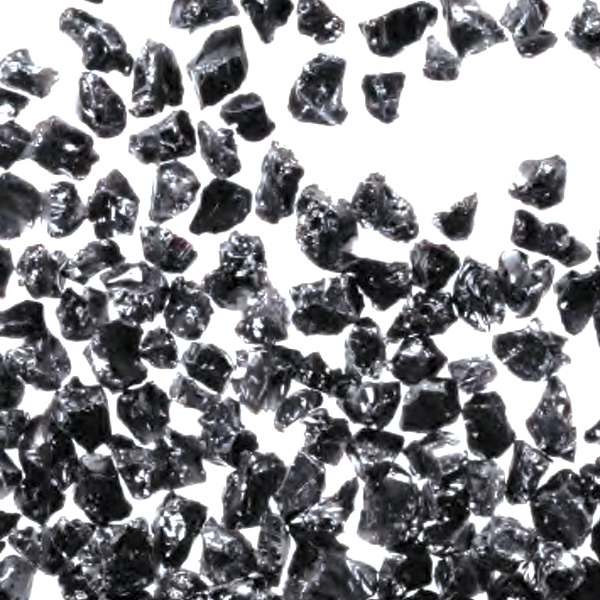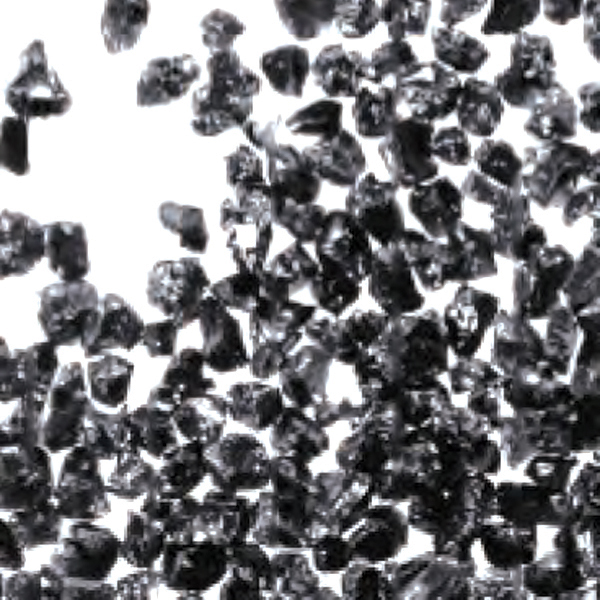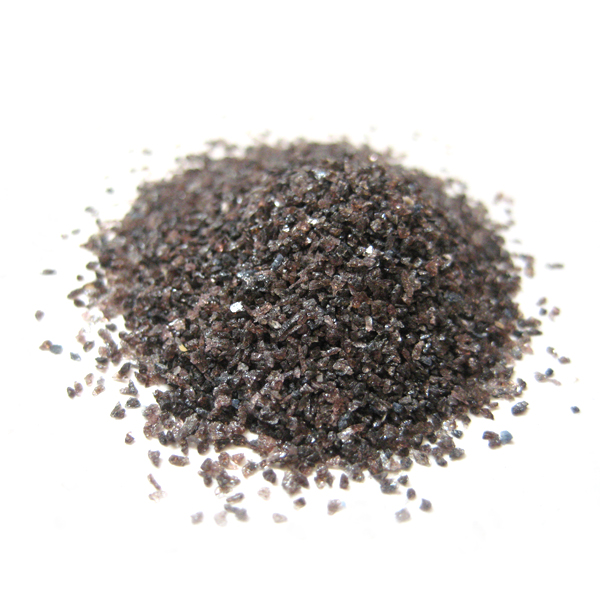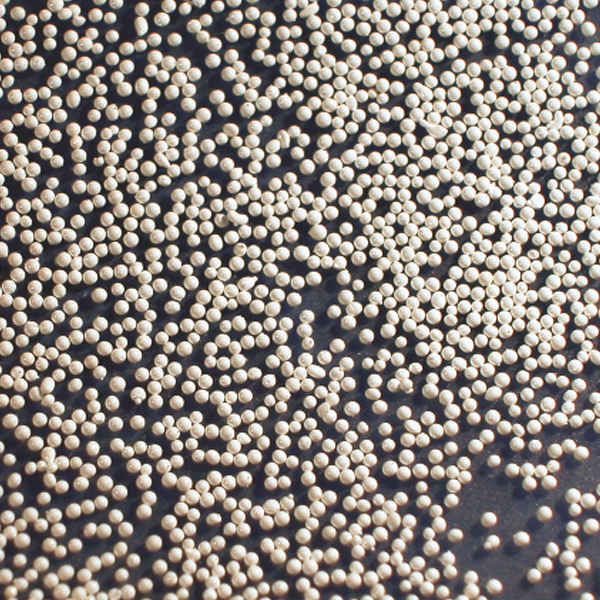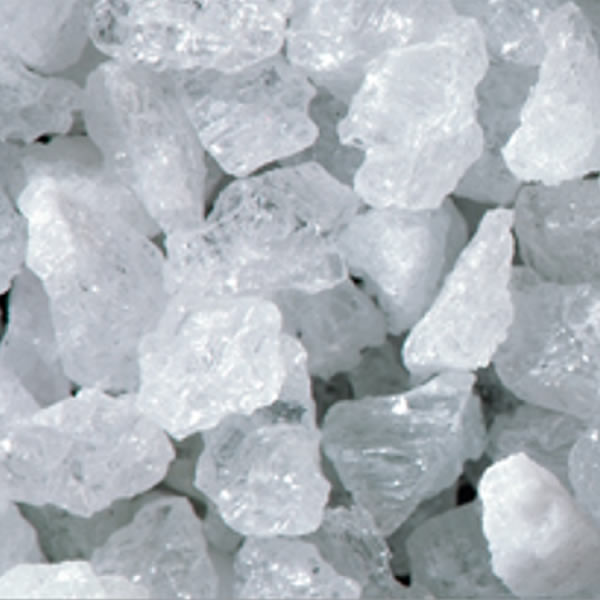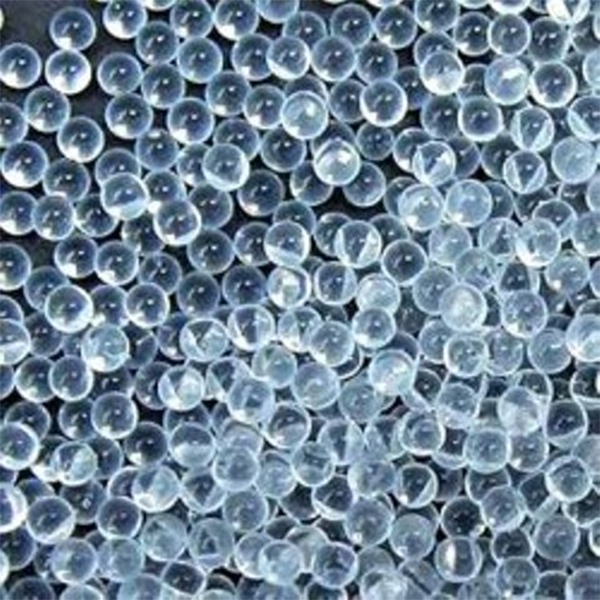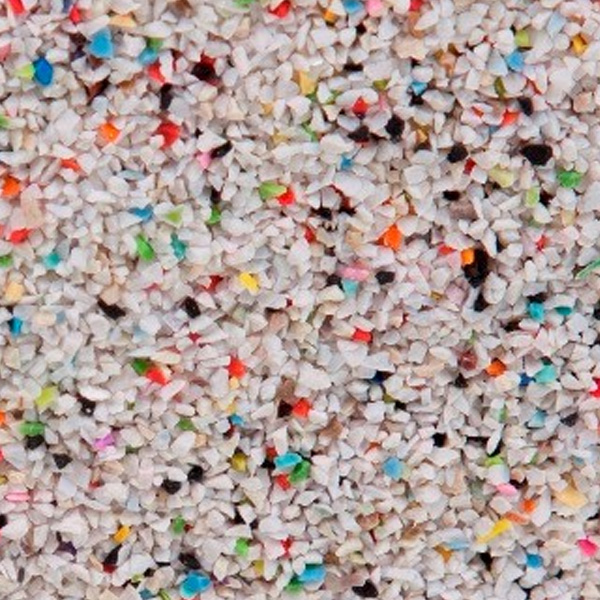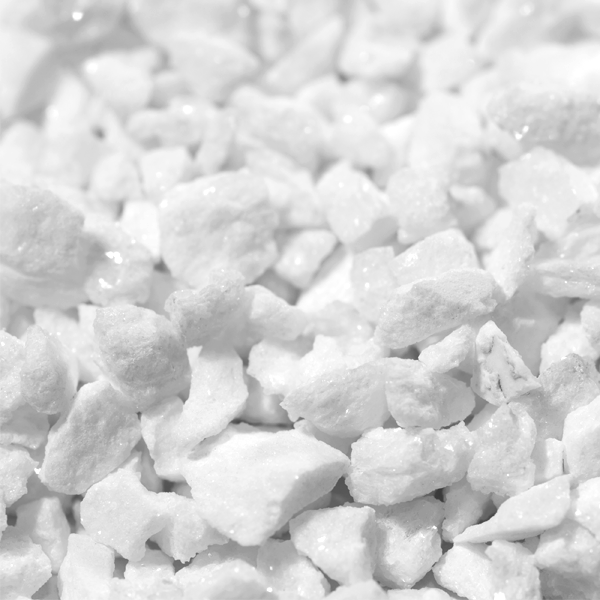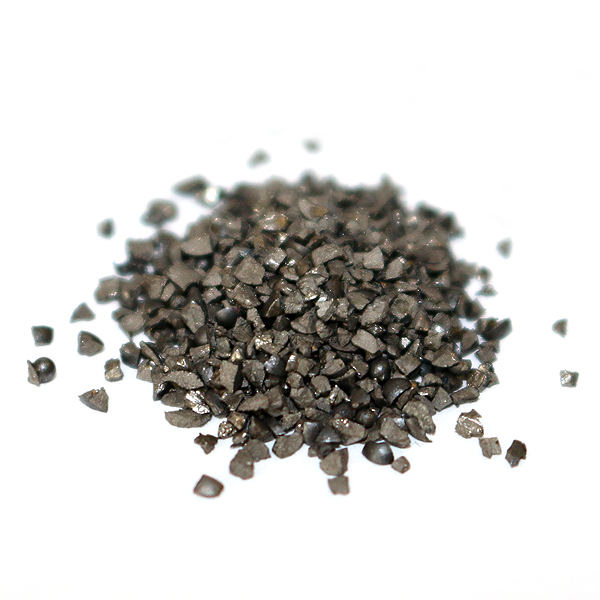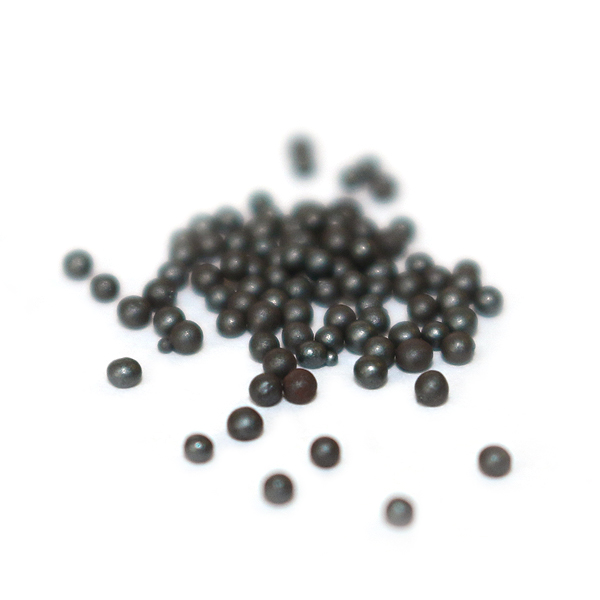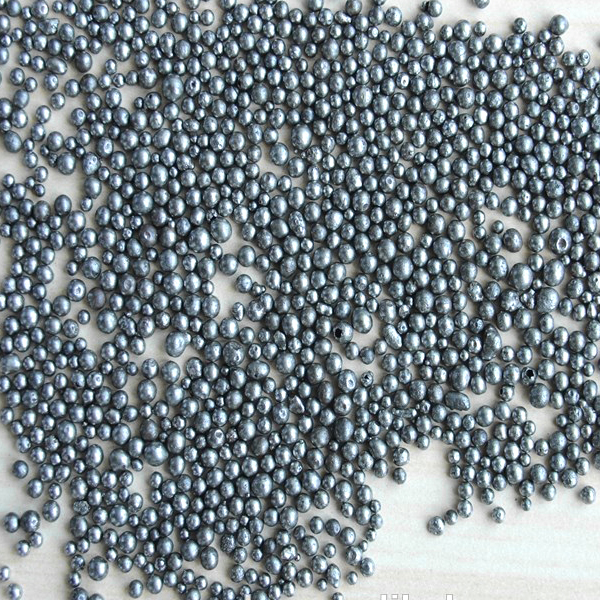
Abrasive Media
Table of Contents
Blasting Abrasives: Industrial Selection Guide
Surface Preparation for Coating Integrity
Controlled Surface Texture and Micro-Finishing
Peening for Fatigue Performance and Structural Stability
Blasting of Sensitive, Thin, or Complex Substrates
Consider the Material You Are Treating (Substrate)
Why Substrate Characteristics Matter
Hard Metals: When High-Impact Energy Is Beneficial
Soft Metals: Protecting Geometry and Surface Integrity
Non-Ferrous Alloys: When Surface Purity Is Critical
Complex or Delicate Geometries: Precision Over Power
Substrate as the Governing Engineering Constraint
Match Abrasive Characteristics to Performance Requirements
High-Hardness Media: Maximum Cutting Power
Mid-Hardness Media: Balanced Cutting and Equipment Wear
Low-Aggression Media: Geometry Protection and Controlled Impact
Particle Shape: How Energy Is Delivered
Grain Size: Fine-Tuning the Surface Result
Recyclability: The Link Between Performance and Cost
Evaluate Operational Priorities
High-Throughput Industrial Environments
Uniform-Finish Applications
Outdoor and Field-Based Workflows
Contamination-Controlled Processes
Managing Machine Wear and Maintenance
Quick Comparison of Abrasive Media
How to Identify the Optimal Blasting Media for High-Performance Surface Treatment
Industrial blasting is a precision operation. Across sectors - drivetrain and turbine manufacturing, medical devices, marine structures, and large-scale steel fabrication - the quality of the result depends on how effectively the abrasive transfers controlled energy into the surface.
That interaction is driven by the properties of the abrasive grains: hardness, toughness, shape, density, and grit size. These characteristics determine whether the media cuts, peens, textures, or simply cleans, and how much dust, heat, or machine load is generated during blasting. Choosing the right abrasive is therefore not a basic consumables decision - it is a process parameter that influences throughput, consistency, and total operating cost.
The sections below offer an expert framework for selecting the most suitable abrasive based on four factors: the blasting objective, the substrate, the mechanical behaviour of the abrasive grains, and the operational conditions under which the media will be used.
The Critical Role of Blasting Objectives in Selecting the Right Abrasive Media
Blasting delivers value only when the intended outcome is clearly defined. The selected abrasive must match that goal, because each type interacts with the surface in a distinct way - whether the task is to expose clean base metal, create a coating-ready profile, strengthen fatigue-critical areas, or refine the texture of tightly toleranced parts. Each outcome requires a different form of controlled energy transfer.
The defined objective sets the depth of interaction, the allowable pressure range, and the level of refinement or structural influence required. It also determines which abrasive behaviours are appropriate: rapid scale removal, precise profiling, compressive peening, or gentle, low-impact finishing.
When the objective is unclear, blasting becomes trial-and-error. Consumption rises, machines drift outside optimal settings, and surface quality becomes inconsistent. When the purpose is explicit - cleaning, profiling, peening, or micro-finishing - media selection becomes straightforward. The abrasive can then be matched to the substrate, the desired finish, the production environment, and the project’s cost constraints.
Cleaning, Descaling, and Coating Removal
Purpose of the Operation
When the goal is to return a component to clean, uniform base material, the abrasive must remove scale, rust, paint, and production residues with controlled energy transfer. In structural refurbishment, rolling stock maintenance, marine restoration, and cast-part preparation, the key factor is how efficiently the abrasive grains cut the surface during each pass.
High-Demand Industrial Cleaning
Angular Steel Grit is the industry benchmark for intensive cleaning and descaling. Its hard, angular shapes penetrate corrosion layers quickly and deliver consistent results in both air-blast and wheel-blast systems. As the grit fractures, it continually exposes fresh cutting edges, maintaining performance across many cycles. In closed loop systems, its recyclability reduces consumption, stabilises process parameters, and lowers overall operating cost.
On-Site and Large-Structure Applications
Field operations - bridges, tanks, offshore structures - require media that perform reliably even when recovery is limited. Mineral abrasive provides this balance. Designed for single-use deployment, it offers predictable cutting performance across mixed materials while remaining easy to handle and cost-efficient. Unlike traditional sand, which has been phased out due to dust and safety concerns, modern mineral abrasives deliver controlled particle sizes and safer working conditions.
When Cleaning Must Also Create a Profile on Special Materials
Some operations must both clean the surface and create a coating-ready profile in one step, on special materials (Titanium alloys, stainless steel etc.). For this, chemical inert media such as Brown Fused Alumina or Garnet offer clear advantages. These abrasives cut aggressively to strip coatings and contamination, yet produce stable anchor patterns that support strong adhesion for coatings, adhesives, and bonding systems. Their controlled breakdown reduces fine dust, improving visibility and reducing the load on filtration and cleanup systems.
Outcome of Correct Media Selection
Choosing the right cleaning media does more than remove surface layers. It produces a uniform, reliable base that can withstand mechanical loads, environmental exposure, and chemical attack. This foundation improves coating durability, weld integrity, and overall long-term performance of the component.
Surface Preparation for Coating Integrity
Why Profile Quality Determines Coating Performance
When blasting forms the base of a protective coating system, the abrasive must create a defined and repeatable surface profile - not just remove contaminants. A consistent anchor pattern is essential across energy, transportation, marine, and heavy-machinery sectors because coating life depends directly on surface uniformity. Even minor variations in profile depth are a common cause of premature coating failure.
Generating Controlled Profiles on Structural Steel
On structural steel, profile control depends on how abrasive grains cut the surface under the selected blast pressure. Angular Steel Grit is preferred because its fractured, angular shapes cut cleanly and create uniform roughness that fits the specification windows for paint, powder coatings, and thermal spray applications. Its geometry remains stable across many cycles, helping maintain consistent profile depth even when wheel speed, nozzle distance, or part geometry varies.
Iron-Free Preparation for Non-Ferrous Materials
Stainless steel, aluminium, titanium, and other high-purity alloys require media that will not introduce iron or foreign particles. White Fused Alumina and Brown Fused Alumina meet this requirement thanks to their high hardness, purity, and predictable fracture behaviour. They generate sharply defined anchor patterns without contaminating the substrate. Their lower tendency to create ultra-fine dust also improves visibility, airflow, and housekeeping within enclosed blast systems - key factors for maintaining stable processing conditions and operator safety.
Balancing Adhesion, Coating Thickness, and Lifecycle Cost
Effective surface preparation creates a texture that ensures strong adhesion without becoming so aggressive that it increases coating volume, or produces uneven film build. When the abrasive is matched to the substrate, coating chemistry, and equipment setup, surface preparation becomes a predictable, low-risk stage of the workflow - one that extends coating lifespan, reduces rework, and improves long-term maintenance efficiency.
Controlled Surface Texture and Micro-Finishing
Purpose of Micro-Finishing in Modern Manufacturing
In many production environments, blasting is used not to remove heavy corrosion or cut deeply into the material, but to create a finely controlled micro-texture. This surface refinement supports cosmetic quality, hygiene requirements, sealing performance, or friction-controlled interaction with mating parts. Finer abrasives are essential here because they produce smoother, more polished surfaces. These requirements are central in medical devices, electronics, precision machining, turbine components, ceramics, and decorative glass.
Spherical Media for Smooth, Dimensionally Safe Finishes
Components with thin walls or softer materials need abrasives that refine the surface without altering geometry. Glass Beads are well suited to this work. Their spherical shape produces uniform, gentle contact that results in satin, bright, or matte finishes with virtually no stock removal. Because they wear down gradually rather than splintering into sharp fragments, they generate less dust and help keep enclosed blasting machines clean and stable - an advantage for applications where clarity, cleanliness, or dimensional accuracy is critical.
Engineered Precision with Ceramic Abrasive
Some surfaces require a more technical micro-texture, such as controlled etching for bonding, sealing, or functional coatings. Ceramic abrasive provides this precision. Manufactured with tight size grading, ceramic grains hold their geometry under repeated impact, creating highly consistent finishes across large production batches. Their low-dust behaviour also reduces contamination risk and lowers filtration demand in sensitive production environments.
Defined Micro-Profiles for Functional Performance
Certain assemblies benefit from a micro-profile that is subtle but distinctly structured. Applications involving adhesives, sealing systems, or mechanical interfaces often require a predictable surface topography. Corundum meets this need effectively. Its sharp yet durable grains create controlled micro-roughness without cutting too deeply, allowing surfaces to support mechanical or chemical bonding while staying within tight dimensional tolerances.
Stability as the Primary Performance Metric
Across all micro-finishing processes, stability - not removal rate - is the key measure of success. The abrasive must behave consistently throughout its service life so each component exits the blasting cell with the specified finish. Media that retain predictable form and breakdown patterns minimise the need for downstream polishing, grinding, or manual correction, delivering highly repeatable and cost-efficient performance.
Peening for Fatigue Performance and Structural Stability
Purpose of Peening in High-Load Components
Peening shifts blasting from surface preparation to mechanical strengthening. Instead of removing material, the process introduces compressive residual stress into the surface layer. This added compression stabilises the material, increases fatigue life, and reduces the risk of crack initiation in parts exposed to repeated loading. It is essential for components such as landing gear, turbine shafts, suspension arms, springs, and rail wheelsets - assemblies where long-term reliability depends on how well the surface withstands cyclic stress.
Why Spherical Media Are Essential
A stable compressive layer can only be achieved when each impact delivers uniform energy. Round Steel Shots are the industry standard because their spherical geometry applies consistent pressure over a predictable area. When used in wheel-blast machines, their mass stability and narrow size distribution keep peening intensity within specification throughout long production runs. This consistency is essential in safety-critical or high-volume applications where even small variations in energy transfer can reduce component performance.
Iron-Free Peening for Corrosion-Sensitive Alloys
Some materials cannot risk iron pick-up. For components in chemical processing systems, stainless steel assemblies, non-ferrous alloys, or hygiene-regulated environments, Stainless Steel Shots provide the required mechanical effect without compromising surface purity. Their composition preserves the corrosion resistance of the base material, ensuring that treated parts remain compatible with aggressive chemicals, moisture exposure, or cleanliness standards.
Process Control as a Structural Requirement
Peening is effective only when the shot media remain within strict limits for size, hardness, and structural integrity. Even minor changes in roundness or mass can shift peening intensity outside the approved window. Robust media classification, well-defined replacement thresholds, and routine monitoring are therefore core elements of the process. These controls ensure that every impact contributes to the intended compressive profile and ultimately to the long-term durability of the component.
Blasting of Sensitive, Thin, or Complex Substrates
Why These Components Require Specialized Media
Thin-gauge metals, composite structures, intricate geometries, and high-value surfaces cannot withstand the impact energy used in structural cleaning or profiling. For these substrates, the abrasive must remove coatings or residues with minimal mechanical intrusion so that geometry, hardness, and functional edges remain intact. Any excessive force risks distortion, micro-cracking, or dimensional drift. Selecting the appropriate abrasive is therefore essential to achieving the required result without damaging the component.
Low-Hardness Media for Non-Destructive Coating Removal
Plastic blasting media is designed for situations where the substrate must remain untouched. Its low hardness and controlled deformation allow it to strip coatings, adhesives, and surface films from metals, plastics, and composites without removing underlying material. This makes it a reliable choice in aerospace maintenance, electronics production, and restoration work - environments where an incorrect abrasive can render a part unusable.
Spherical Media for Gentle Cleaning and Cosmetic Finishes
When cleaning or cosmetic refinement is required without altering dimensions, Glass Beads offer precise and uniform contact. Their spherical shape distributes pressure evenly, enabling satin finishing, light deburring, and edge conditioning on thin metals or formed parts. Because they do not cut aggressively or fracture into sharp fragments, they support clean, controlled machine conditions and integrate smoothly into quality-controlled production lines.
Precise Profiling for Tight-Tolerance Surfaces
Some sensitive components require a slightly sharper micro-blast but still cannot tolerate aggressive cutting. Fine White Fused Alumina provides this balance. At lower pressures, its grains cut predictably while generating minimal heat and limited dust. This helps engineers achieve specific cleanliness levels or micro-textures on parts where thermal stress, contamination, or dimensional variation must be avoided.
Ensuring Dimensional Stability Across All Sensitive Applications
Regardless of the substrate or media chosen, the core requirement remains the same: achieve the intended surface effect while preserving every functional detail of the component. With the correct abrasive, operators can clean, prepare, or micro-texture delicate parts in a way that keeps them dimensionally stable, structurally sound, and ready for downstream processing or assembly.
Consider the Material You Are Treating (Substrate)
Why Substrate Characteristics Matter
Once the blasting objective is set, the substrate becomes the next critical selection factor. Each material - whether a high-strength steel casting, a thin aluminium panel, or a precision-machined alloy - absorbs impact energy differently. These differences determine how the surface will react to abrasive grains. Using media that is incompatible with the substrate can lead to distortion, embedded contamination, or uneven profiles that complicate downstream machining, coating, or assembly.
Hard Metals: When High-Impact Energy Is Beneficial
Carbon steel, forged steel, ductile iron, and cast components can withstand strong mechanical impact. For these substrates, media such as Angular Steel Grit, Round Steel Shots, Brown Fused Alumina, and Garnet deliver efficient cutting or peening while maintaining their form over many cycles. Their consistent impact behaviour stabilises removal rates and machine load - an important factor in applications that involve thicker corrosion layers or require well-defined structural profiles.
Soft Metals: Protecting Geometry and Surface Integrity
Aluminium, copper, zinc, and magnesium deform easily under pressure, so the abrasive must interact gently with the surface.
• Glass Beads provide smooth cleaning without cutting.
• Plastic blasting media removes coatings while preserving geometry.
• Fine White Fused Alumina creates light functional micro-textures where needed.
Non-Ferrous Alloys: When Surface Purity Is Critical
Stainless steel, titanium, and nickel alloys cannot risk embedded foreign metals or residue. Stainless Steel Shots, Glass Beads, and White Fused Alumina provide clean surface preparation without transferring contaminants. Their behaviour under impact keeps weld seams, process equipment, and hygiene-critical components compatible with strict corrosion and cleanliness requirements.
Complex or Delicate Geometries: Precision Over Power
Turbine vanes, medical components, pump internals, restoration pieces, and fine-machined parts require abrasives capable of reaching intricate features without removing stock. Plastic blasting media, Glass Beads, and fine Ceramic abrasive allow operators to clean or micro-texture internal radii, fillets, and recesses while maintaining wall thickness and dimensional accuracy. Their predictable breakdown also generates less ultra-fine dust, improving machine stability and process consistency.
Substrate as the Governing Engineering Constraint
In practice, the substrate determines the acceptable pressure window, abrasive hardness, grain size, and allowable impact energy. When the abrasive is matched precisely to these properties, blasting becomes a controlled and repeatable process - minimising deformation, preventing contamination, reducing premature wear, and ensuring high-quality, predictable results.
Match Abrasive Characteristics to Performance Requirements
Once the blasting objective and substrate are defined, the abrasive must be matched to the level of mechanical interaction required. In production settings, every abrasive grain acts as a micro-tool: it strikes the surface, transfers energy, fractures, and continues cycling through the machine until its shape or mass can no longer produce the intended effect. Understanding how hardness, shape, grain size, and media life behave under real working conditions is essential for achieving consistent results from the first component to the last.
High-Hardness Media: Maximum Cutting Power
White Fused Alumina and Brown Fused Alumina provide the most decisive cutting on demanding materials. Their mineral structure resists flattening under pressure, and fresh cutting edges appear naturally as the grains fracture. This behaviour makes them ideal for hard metals, advanced coating systems, and applications with tight finish tolerances. Their predictable cutting profiles reduce process drift and ensure that critical dimensions remain within specification.
Mid-Hardness Media: Balanced Cutting and Equipment Wear
Angular Steel Grit and Garnet deliver strong cutting without the extreme aggressiveness of the hardest minerals. Their controlled breakdown produces stable profiles and steady machine load, making them reliable choices for structural steel, energy infrastructure, and heavy manufacturing. Because these media maintain consistent behaviour over long campaigns, they integrate smoothly with downstream machining, grinding, and bonding processes.
Low-Aggression Media: Geometry Protection and Controlled Impact
Glass Beads and Plastic blasting media interact with the surface through gentle, controlled impact rather than deep cutting.
- Glass Beads create smooth or satin finishes, ideal for thin-walled components and softer metals.
- Plastic blasting media removes coatings or films without altering geometry, supporting operations where dimensional accuracy, low heat generation, and minimal stress input are essential.
- Ceramic abrasive, although more costly, offers long life and exceptional precision in controlled-texture applications.
Particle Shape: How Energy Is Delivered
Particle shape determines how the abrasive transfers energy into the surface:
- Spherical media - Round Steel Shots, Stainless Steel Shots, and Glass Beads - create uniform compressive stress or smooth surface contact. They excel in peening, deburring, edge conditioning, and cosmetic finishing.
- Angular media - Angular Steel Grit, Brown Fused Alumina, White Fused Alumina, Corundum, and Garnet - behave like cutting tools. Their sharp edges remove stock efficiently, generate profiles, and expose clean metal for coatings or functional treatments.
Grain Size: Fine-Tuning the Roughness
Grain size determines how aggressively the media interacts with the substrate:
- Coarse grains remove heavy corrosion, casting residue, and thick coatings quickly, leaving deeper anchor profiles.
- Medium grains form the foundation of general structural and mechanical preparation.
- Fine grains support micro-finishing, precision texturing, and the cleaning of thin metals, offering better control over heat generation, dust, and dimensional impact.
Recyclability: The Link Between Performance and Cost
Media life affects both cost and process stability:
- Round Steel Shots, Stainless Steel Shots, and Angular Steel Grit provide long service life, making them ideal for wheel machines and high-volume blasting.
- Ceramic abrasive and Glass Beads offer mid-range life and refined finishes.
- Mineral abrasive and Garnet are expendable solutions suited to large structures or on-site blasting where recovery systems are not practical.
When hardness, shape, grain size, and recyclability are aligned with process requirements, abrasive performance becomes predictable. This improves surface quality, reduces dust load, stabilises machine wear, and lowers total cost of ownership - transforming abrasive selection from a consumables choice into a strategic driver of process reliability.
Evaluate Operational Priorities
Even when the abrasive is technically aligned with the process objective and the substrate, actual performance depends on the conditions in which it operates. Throughput expectations, machine configuration, environmental limits, and lifecycle cost all influence how abrasive grains behave once they enter continuous production.
High-Throughput Industrial Environments
Automotive hubs, rail wheelsets, cast components, and structural steel lines expose both media and machinery to sustained, repetitive impact. In these systems, Angular Steel Grit and Round Steel Shots provide the stability required for consistent cycle times. Their controlled wear patterns help maintain uniform surface finishes, reduce the need for frequent media adjustments, and keep wheel machines operating within optimal pressure and speed ranges. This reliability supports better cost control and improves the performance of downstream processes.
Uniform-Finish Applications
Industries that rely on consistent surface quality - such as foundries, refining machined parts, glass and ceramics manufacturers, and producers of sealing or bonding surfaces - benefit from Glass Beads and Ceramic abrasive. Their clean fracture behaviour generates minimal airborne dust, improving visibility and reducing stress on filtration systems. The uniform shape of these grains ensures steady, predictable contact with the material, allowing long production batches to meet specification without additional polishing or rework.
Outdoor and Field-Based Workflows
Construction sites, marine yards, energy installations, and pipeline maintenance require media that perform reliably despite moisture, wind, temperature variation, and limited recovery systems. Mineral abrasive meet these demands by offering dependable cutting performance without requiring complex separation or recycling equipment. For large work areas and remote locations, their balance of cutting power and unit price makes them practical, scalable choices.
Contamination-Controlled Processes
Some facilities prioritise surface purity over processing speed. Plants working with stainless steels, high-grade alloys, food-equipment components, or medical devices cannot risk embedding incompatible metals. Stainless Steel Shots, Glass Beads, and White Fused Alumina are preferred in these environments because they clean or texture without altering the material’s corrosion resistance or hygiene properties.
Managing Machine Wear and Maintenance
Abrasive hardness directly affects machinery. Very hard minerals - Brown Fused Alumina, White Fused Alumina, and Corundum - provide exceptional cutting power but accelerate wear on nozzles, wheel blades, housings, and linings. Their use is appropriate for heavy material removal or deep-profile work; in other scenarios, operators often select mid-hardness media to extend equipment life. Spherical media such as Round Steel Shots, Stainless Steel Shots, and Glass Beads create smoother internal contact surfaces, slowing erosion and helping turbines, hoses, and wheels remain within their intended service intervals.
For more details about specific abrasive solutions or to discuss your operational requirements, please contact us.
Quick Comparison of Abrasive Media
| Abrasive Type | Best For | Not Ideal For | Why It’s Chosen |
| Mineral Abrasive | Large on-site blasting, rust/scale removal, situations with no recovery | Precision or tolerance-critical work | Expendable, practical in field conditions; stable cutting across mixed materials |
| Brown Fused Alumina | Deep profiles, demanding preparation on hard steels | Soft alloys, thin sections | Very hard, fast-cutting grains that produce strong anchor patterns |
| Ceramic Abrasive | Micro-finishing, controlled textures, cosmetic or hygiene-critical surfaces | Heavy corrosion removal or bulk descaling | Uniform grain geometry, low dust, highly repeatable finishes |
| Garnet | Coating prep, on-site blasting, general maintenance work | Deep structural profiling, mechanical strengthening | Clean cutting, low embedding, consistent performance as an expendable media |
| Glass Beads | Smooth or satin finishes, deburring, cleaning softer or thin metals | Heavy removal, deep profiling | Spherical impact delivers uniform, bright finishes without stock loss |
| Plastic Blasting Media | Sensitive substrates, composites, thin metals, paint or adhesive removal | Hard steels needing high aggression | Low-hardness media that strips coatings without altering geometry |
| White Fused Alumina | High-precision blasting, contamination-sensitive metals, functional micro-textures | Soft metals in coarse sizes | Extremely hard, sharp grains ideal for controlled micro-profiling |
| Angular Steel Grit | High-demand cleaning, descaling, and structural steel preparation | Soft alloys, thin or delicate parts | Aggressive cutting with excellent recyclability and stable machine behaviour |
| Round Steel Shots | Peening, high-productivity cleaning of robust components | Easily marked or soft materials | Spherical mass delivers uniform compressive stress and long recycling life |
| Stainless Steel Shots | Iron-free cleaning/peening of stainless, aluminium, and non-ferrous components | Large-scale rust removal on carbon steel | Delivers mechanical impact without introducing corrosion-risk contaminants |
For tailored guidance on selecting the most effective abrasive solution for your specific application, get in touch with our expert team.
